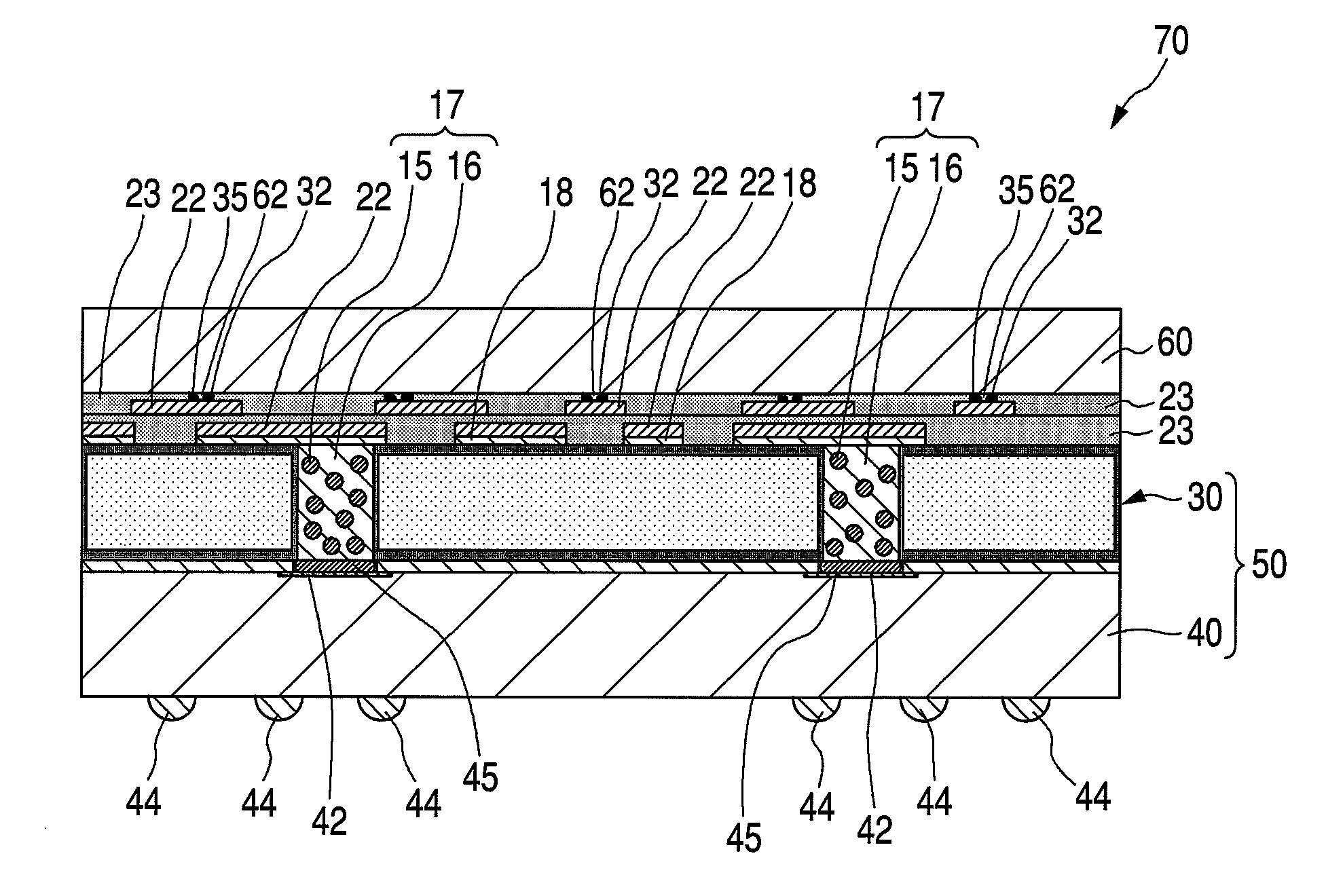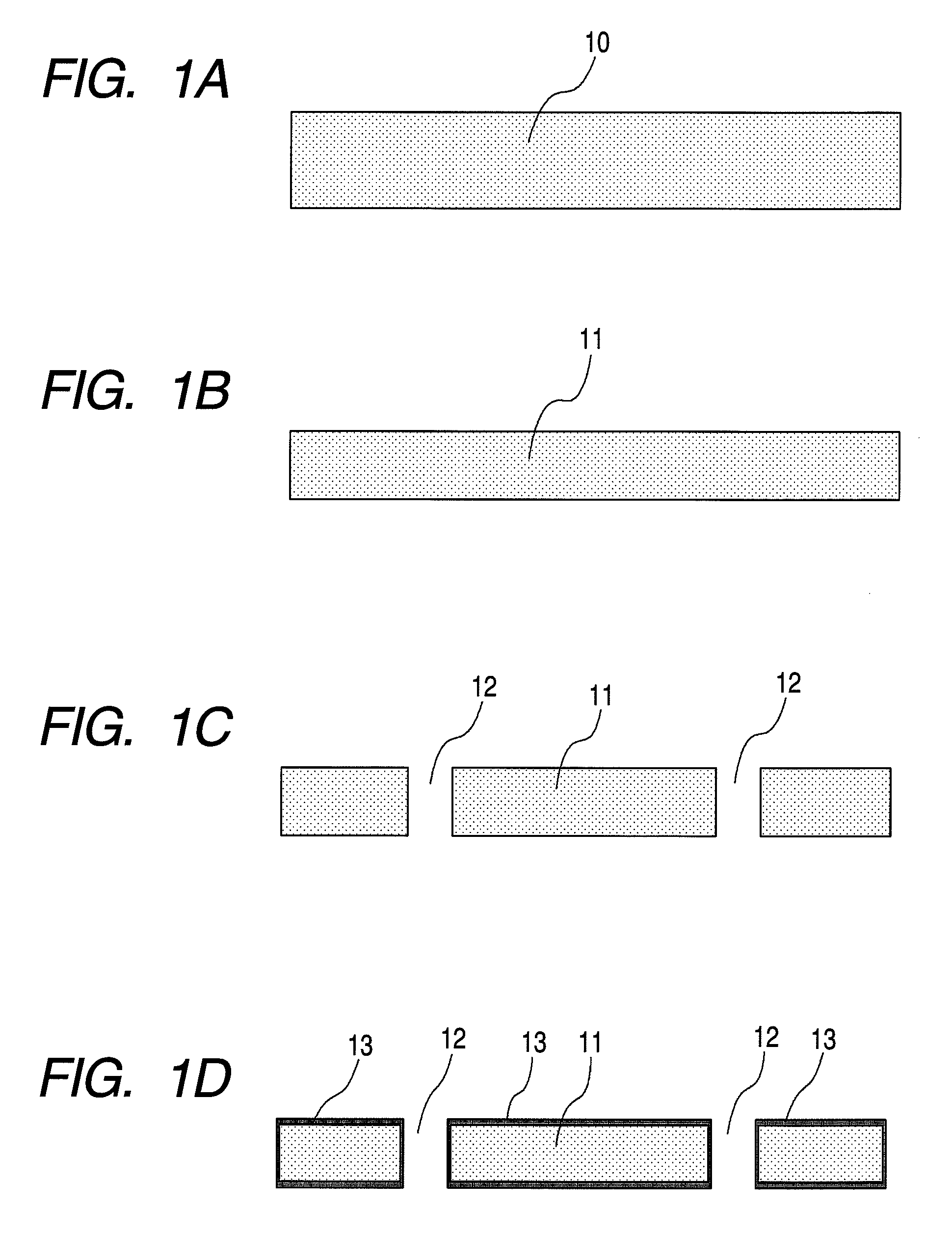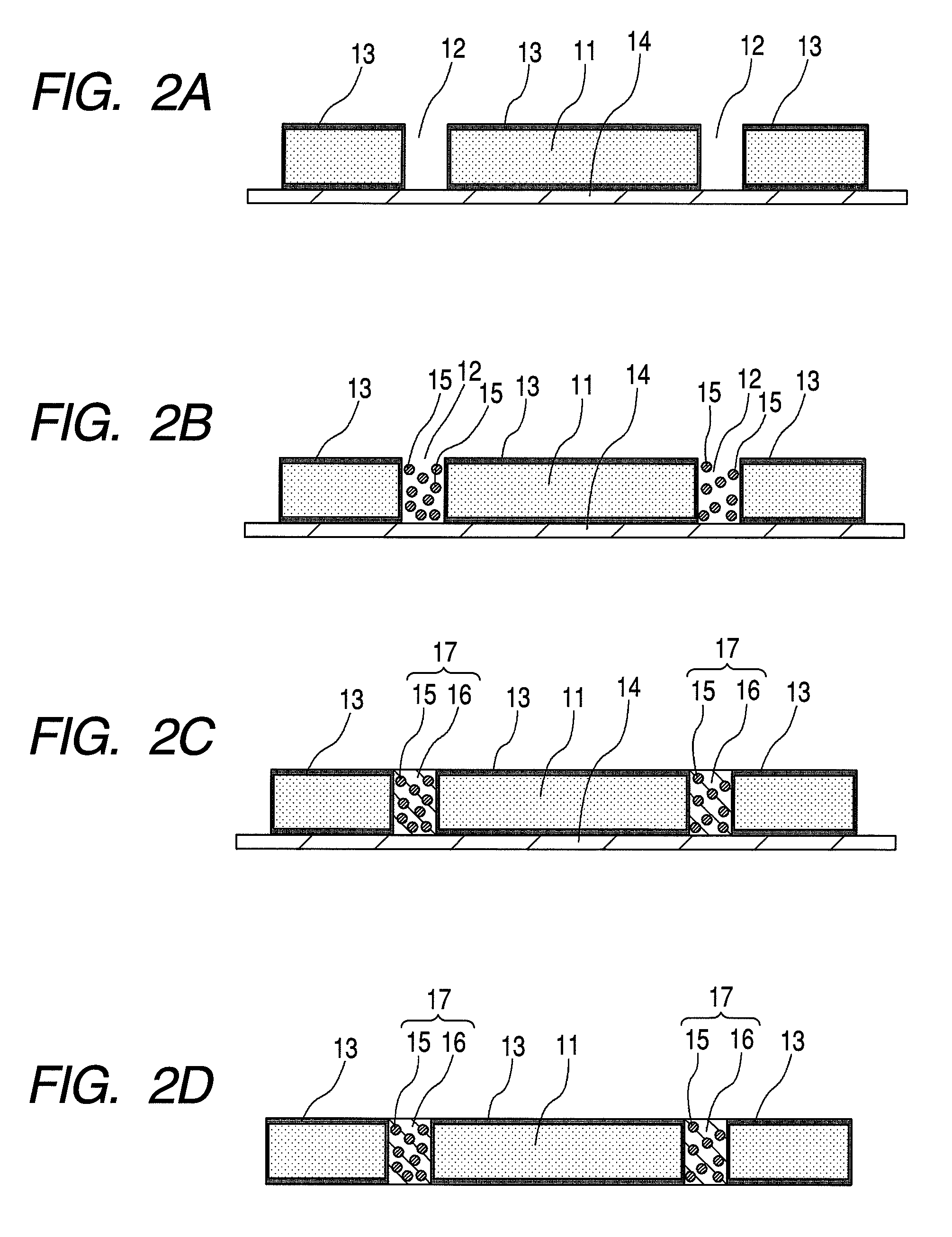Silicon interposer producing method, silicon interposer and semiconductor device package and semiconductor device incorporating silicon interposer
a silicon interposer and producing method technology, applied in semiconductor devices, semiconductor/solid-state device details, electrical apparatus, etc., can solve the problems of cracks at the connection sections between the wiring board and the semiconductor elements, damage to the semiconductor elements, and shorten the plating time, so as to effectively produce the silicon interposer
- Summary
- Abstract
- Description
- Claims
- Application Information
AI Technical Summary
Benefits of technology
Problems solved by technology
Method used
Image
Examples
first embodiment
[0049]An embodiment of a silicon interposer according to the present invention will be described below on the basis of the drawings. FIGS. 1A to 1D and FIGS. 5A and 5B are sectional views showing the states at the periphery of through-hole electrodes in the respective production stages of the silicon interposer according to this embodiment.
[0050]First, as shown in FIG. 1A, after a silicon wafer 10 is sliced, it is ground using a grinder or the like to a thickness of 300 μm. After the silicon wafer 10 is processed into a thin silicon wafer 11 shown in FIG. 1B, the surface of the thin silicon wafer 11 is covered with a mask having openings at regions where through holes 12 are formed, and etching is carried out, whereby the through holes 12 shown in FIG. 1C are formed. The through holes 12 according to this embodiment are formed so as to have a diameter of 60 μm. The through holes 12 are later filled with conductive materials so as to be formed into the through-hole electrodes 17 of a...
second embodiment
[0075]FIG. 9 is a sectional view showing the state at the periphery of the through-hole electrodes of a silicon interposer according to a second embodiment.
[0076]This embodiment is characterized in that, instead of filling the silica particles 15, 15, . . . in the form of multiple fine particles into the through hole 12, only one silica particle 15 formed to have a large diameter that can be accommodated into the through hole 12 is accommodated therein. The adoption of the configuration according to this embodiment is advantageous in that the silica particle 15 can be produced easily and that the work for accommodating the silica particle 15 into the through hole 12 can be carried out easily.
third embodiment
[0077]FIG. 10 is a sectional view showing the state at the periphery of the through-hole electrodes of a silicon interposer according to a third embodiment.
[0078]This embodiment is characterized in that acicular silica pieces 15A formed to have a size that can be accommodated into the through hole 12 is accommodated therein. It is preferable that the height of the acicular silica pieces 15A according to this embodiment is approximately equal to the height of the through hole 12. Furthermore, although multiple acicular silica pieces 15A are accommodated in the through hole 12 in FIG. 10, a single acicular silica piece 15A may also be accommodated in the through hole 12 as a matter of course.
[0079]Since the methods for producing the silicon interposer 30 and the semiconductor device package 50 and the semiconductor device package 50 incorporating the silicon interposer 30 according to the second embodiment and the third embodiment are similar to those according to the first embodiment...
PUM
| Property | Measurement | Unit |
|---|---|---|
| thickness | aaaaa | aaaaa |
| diameter | aaaaa | aaaaa |
| thickness | aaaaa | aaaaa |
Abstract
Description
Claims
Application Information
 Login to View More
Login to View More - R&D
- Intellectual Property
- Life Sciences
- Materials
- Tech Scout
- Unparalleled Data Quality
- Higher Quality Content
- 60% Fewer Hallucinations
Browse by: Latest US Patents, China's latest patents, Technical Efficacy Thesaurus, Application Domain, Technology Topic, Popular Technical Reports.
© 2025 PatSnap. All rights reserved.Legal|Privacy policy|Modern Slavery Act Transparency Statement|Sitemap|About US| Contact US: help@patsnap.com



